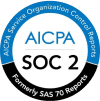Introduction
Programmatic job advertising – sounds complex? Don’t worry, we’ve got you covered! In this vlog series, we’re diving deep, breaking down the jargon, and giving you a clear roadmap to navigate the subject.
Whether you’re an HR pro, a recruiter, or just curious about how job ads get served to candidates, this series – led by industry expert Stephanie Strom will provide the insights you need. From understanding the fundamentals of programmatic advertising to choosing the right platform and optimizing your ad strategy, we’ll walk you through it all. So, grab a cuppa and get ready to become a programmatic pro!
Episode 1: Getting started
Hi, I’m Stephanie Ginsburg. Together we’ll deep dive into the strategies, technologies, and best practices of programmatic job advertising. Before we get started, I’d like to introduce myself. I’ve been a marketer within the recruitment marketing industry the majority of my career. Most recently I had the privilege of leading global recruitment marketing for driver and delivery driver acquisition at Uber. While at Uber, I loved working closely with product and leadership teams of programmatic job advertising platforms and publishers, offering insights, feedback, and really helping shape the progression of adtech and automation within the recruitment marketing space. So, whether you’re an HR or TA professional, a recruiter or simply someone who’s looking to learn a little bit more about the future of talent acquisition, this series will help provide you with a comprehensive view of programmatic job advertising and this everchanging world of recruitment marketing. Welcome to debunking programmatic! Let’s get started.
Episode 2: Understanding programmatic advertising
Programmatic advertising is the automated buying and selling of digital ad inventory.
Before programmatic advertising, buyers would need to go directly to suppliers to purchase ads on their websites. Direct buying still exists in today’s programmatic world, and for websites’ ad inventory that is not purchased through a direct deal, there are automated systems in place that help get the best price for that inventory that’s left on-site. That is programmatic advertising.
To understand how programmatic advertising works, let’s define some key components. Ad exchanges are an automated digital marketplace where inventory is auctioned in real time. DMPs, or data management platforms, generate audience lists or segments, which are used to target specific users online. DSPs, or demand-side platforms, are systems that enable advertisers to buy inventory from multiple publishers. SSPs, or supply-side platforms, are systems used by publishers to sell their inventory.
How does programmatic advertising work? First, an advertiser or their agency of record uses a DMP to effectively target a campaign to the correct audience. The advertiser or their agency of record also uses a DSP to automate the process of transacting with publishers.
All in the span of a website loading, a user’s information is sent to the ad exchange or an SSP. This is where the DSPs can identify what inventory is available and what meets the audience criteria set through the DMP. If a user’s information fits the advertiser’s target audience, a bid is generated and goes through a real-time auction with other advertisers competing for that inventory.
Once you win a bid, ad information is sent to the publisher’s website, and the ad is served to the user.
Programmatic job advertising attempts to do most of the above for job ads and has been evolving over recent years to get closer to a truly programmatic advertising system. Effectively, programmatic job advertising platforms can perform similar functions to DSPs and DMPs for recruitment.
Episode 3: Job segmentation, distribution, and optimization
Let’s review programmatic job advertising platforms.
Programmatic job advertising platforms enable companies and employers to purchase and distribute job ads to job sites through automation.
A few key automated components of most programmatic job advertising platforms are job segmentation, job and bid distribution, and bid and budget optimization. Let’s break these down a little bit further.
Job groups, campaigns, or segments are created in programmatic job advertising platforms by setting rules intended to target the right job to the right user in the right location at the right price. For example, a hard-to-fill role in New York City can be segmented through automated rules to have its own budget and goals, completely independent of other roles you might be advertising across the United States.
A programmatic job advertising platform can automatically distribute high volumes of job ads with their corresponding bid across hundreds of job boards, search engines, and social channels around the world. Through rules-based automation or AI, the platform can also modify the distribution of job ads based on ad performance.
Programmatic job advertising platforms can optimize bids and budgets for jobs, job groups, or campaigns towards goals that are set in the platform. Goals may include a daily, weekly, or monthly budget, volume of job applications, the cost per application or hire, efficiency metrics, return on ad spend, or any other metrics that are tied to your KPIs.
Platforms provide dashboards or data visualization tools to effectively view job ad performance and to analyze trends. When programmatic job advertising platforms can provide both high-level trends and granular reports, you can make more confident, data-driven decisions about ad spend and campaign strategies.
Episode 4: How recruitment media is bought
There are currently three methods to buy job advertising: dynamic bidding, static or fixed bidding, and direct buying.
The most common method for programmatic job advertising is dynamic bidding. A dynamic bid enables an advertiser to set the price and to optimize the bid in an effort to reach their goals.
There’s a few acronyms for bidding that we’ll be referencing, so here you go.
A CPC is cost per click. A CPA is cost per action. In this case, with programmatic job advertising, the action is typically an application, but it could also be any other event that is tracked that you hope to pay for that action. And a CPM is the cost for 1,000 impressions.
Dynamic CPC, CPA, and CPM bidding allow an advertiser to set flexible prices based on performance.
Fixed bidding, on the other hand, is a static price typically set by the publisher. Fixed CPC, CPA, and CPM are less common in recruitment marketing, especially in the United States, but it is still common among many job boards internationally.
Thirty-day job slots can also be classified as fixed bidding, where they are typically set at a fixed rate per slot or duration-based posting. Fixed bids cannot be optimized, so other levers of optimization can be utilized, such as location or content.
The final method of buying job advertising is direct buying. A direct purchasing deal between an advertiser and a publisher might include a package of job slots, an employer branding profile, or on-site advertisements.
Episode 5: How to choose a programmatic job ad platform
Choosing a programmatic job advertising platform is a meaningful piece of your recruitment marketing strategy. When reviewing which platform may be the best fit for your recruitment needs, it’s important to identify your goals and your comfort level with programmatic job advertising.
The criteria for choosing a platform does not only include the consideration of technology, platform features, dashboards, performance guarantees, and pricing. It also includes the customer service team, the collaboration or partnership to reach decisions together. And the opportunities for education and knowledge sharing about this ever-evolving space.
You may also choose to consider how hands-on you’d like to be with the day-to-day management. Many platforms provide the choice of self-service or managed services, where the platform’s team is responsible for the day-to-day optimizations.
It’s important to make sure that you’re entrusting both your dollars and the data of your campaigns to the platform with peace of mind. Particular features or tools may stand out as value adds for you and your team, making the selection of a platform a highly individual experience.
Episode 6: Developing a programmatic job ad strategy
One of the first components of developing a programmatic job advertising strategy is generating a feed of jobs. You or your team will decide what jobs you would like to advertise or go live with within a feed. It’s helpful to start by asking the following questions:
- What is the role?
- Who is your ideal candidate for the role?
- Where is the role based geographically?
- How much are you willing to pay to advertise this role?
- Do you have a role-specific advertising budget, or how will you plan to pay for this role’s ad spend within your overall budget?
- Will you reach your ideal candidate by targeting particular job boards?
- How can you reach your ideal candidate on those identified sites where you might reach them?
- If you have numerous roles or locations to advertise, is there a prioritization that should be considered?
- Are there any key performance indicators or KPIs that will be used to establish success relative to the performance of the ads?
Once you have a clear idea specifically of what the role is and who your ideal candidate is, you can more easily segment your jobs into job groups or campaigns. From there, you can create segmented strategies based on the roles, locations, or other classifications included in that job group or campaign.
The flexibility to develop posting and optimization strategies for different jobs within your feed will be helpful, especially within targeting specialized industries or roles, particular job boards, or specific locations. If you have questions while developing your strategy or setting up job groups and campaigns, be sure to lean on your programmatic job advertising support team.
Actionable data is key when comparing the performance of job ads across multiple placements, platforms, and sources. With adequate tracking in place, your programmatic job advertising platform can serve as a single source of truth to review the performance of your job ad. Through the platform’s dashboards or exported reports, you’ll be able to compare and analyze performance.
When optimizing job ad placements, it’s helpful to familiarize yourself with each platform’s trends of ad spend, engagement, and actions as a baseline. Once you are familiar with these baseline trends, you’ll be able to more easily identify outliers that are ready for optimization.
Programmatic job advertising platforms will have numerous tools and features to support your ability to reach the right candidate at the right place and the right price. Utilizing in-platform tools to automate bid or content optimization will enable you and your team to focus your attention on the performance of the ads themselves and not necessarily the highly manual task of setting job group or campaign level changes and content optimizations.
Programmatic job advertising platforms that utilize industry data to identify trends and valuable insights are highly beneficial to improving a recruitment marketing strategy. Marketplace dynamics on job boards and recruitment sites can be complex and change quickly. Having a knowledgeable team supporting you and empowering you with data to make strategic decisions is key.
As the technology powering programmatic job advertising evolves, programmatic job advertising platforms that utilize AI, machine learning, or other forms of intelligent automation can be well-positioned to outperform the technology of other platforms.
Episode 7: Limitations of programmatic job advertising
Let’s review programmatic advertising and programmatic job advertising. There are some key similarities and differences that are helpful to be aware of.
Programmatic advertising is an automated system for buying and selling digital ad inventory in real time. Programmatic job advertising is a semi-automated, pay-per-performance, feed-based job ad buying. Both systems of advertising use automation to facilitate the transaction of an ad placement between an advertiser and a publisher.
And like we reviewed before, programmatic job advertising attempts to do most of what programmatic advertising does for job ads, and it has been evolving rapidly over the past several years to get closer and closer to a truly programmatic advertising system. Effectively, programmatic job advertising platforms can perform a few key similar functions to demand-side platforms or DSPs and DMPs. Programmatic job advertising still lacks features and tools available in many digital channels in programmatic advertising, like:
- Real-time bidding
- DSPs, SSPs, and DMPs
- User-level audience targeting and suppression
- Second-price auctions
- Standardized metric definitions
- Traffic source transparency
- Whitelists and blacklists
And so many more.
Latency, in the context of programmatic job advertising, is the delay of information shared between the platform, job site, and employer or advertiser. There are numerous pieces of information that are impacted by latency, including ad performance metrics that correspond to a billable event, like a click or apply, and changes to job ad details included within a feed so your content or your bid.
Latency of ad performance metrics can be problematic when managing ad spend within a budget, reconciling ad spend, or controlling content distribution and bid accuracy. Think of it like a game of telephone – when information travels from source to source to source, and each website has their own capabilities that enable them to comply with moving that information within an agreed-upon time window of time or an SLA.
Assuming that everything goes as planned, all players in this game of telephone provide their information and move things along within their SLA. But let’s walk through an example.
An employer updates job ads within their programmatic job advertising platform. From here, the platform uses automation to generate and distribute a feed of jobs and sends that feed to publishers. Some publishers are able to index that feed within an hour, while others may take upwards of 24 to 48 hours or longer to index those new jobs. There’s a full spectrum of sites whose capabilities fall somewhere in between. Because of this issue, it’s challenging to keep up with where everyone is within this game of telephone – especially when there’s syndication of networks of sites at play. This example of refreshing a feed of jobs is commonplace in today’s programmatic job advertising ecosystem and is just one example of the impact of latency.
Would you choose to spend your recruitment budget serving an ad to someone who already applied to that advertised role? No.
In programmatic advertising, marketers utilize a DMP to segment existing users, clients, or customers into a suppression list. Audience suppression in programmatic job advertising would prevent unnecessary ad spending on candidates who have already applied to the role being advertised. When job boards and programmatic job advertising platforms build the necessary capabilities that could accommodate audience suppression, the industry will have taken a significant step forward in closing that gap between programmatic advertising and programmatic job advertising.
Another limitation of programmatic job advertising is the inability to create blacklists and whitelists.
A blacklist is a list of websites set by an advertiser where they do not want their ads to be served. A whitelist is the inverse – a list of websites that an advertiser chooses to include in their media buying strategy.
Most job boards and recruitment sites who syndicate job ads to a network of other websites do not have the capability – or the willingness – to allow an advertiser to set a blacklist or a whitelist.
Conclusion
By now, you should have a solid grasp of the basics – what programmatic job advertising is, how it works, and how you can use it to improve your recruitment strategy. We’ve covered everything from automation and optimization to bidding strategies and platform selection.
While programmatic job advertising is a game-changer, it’s not without its challenges. But with the right knowledge, tools, and partners, you can unlock its full potential and watch your recruitment ROI soar.
So, whether you’re just getting started or refining your current approach, keep experimenting, keep optimizing, and most importantly – keep hiring smarter!
Frequently Asked Questions
What is programmatic job advertising?
Programmatic job advertising is the automated buying and optimization of job ads using AI and data-driven decision-making. It helps recruiters target the right candidates at the right time, improving efficiency and reducing costs.
How is programmatic job advertising different from traditional job advertising?
Unlike traditional job advertising, where ads are manually placed on job boards, programmatic job advertising automates the process, using algorithms to optimize ad spend, targeting, and placement in real-time.
Is it complicated to implement programmatic job advertising?
Not at all. With the right platform, programmatic advertising can be set up quickly, integrating with your existing applicant tracking system (ATS) and career site to streamline the process.















